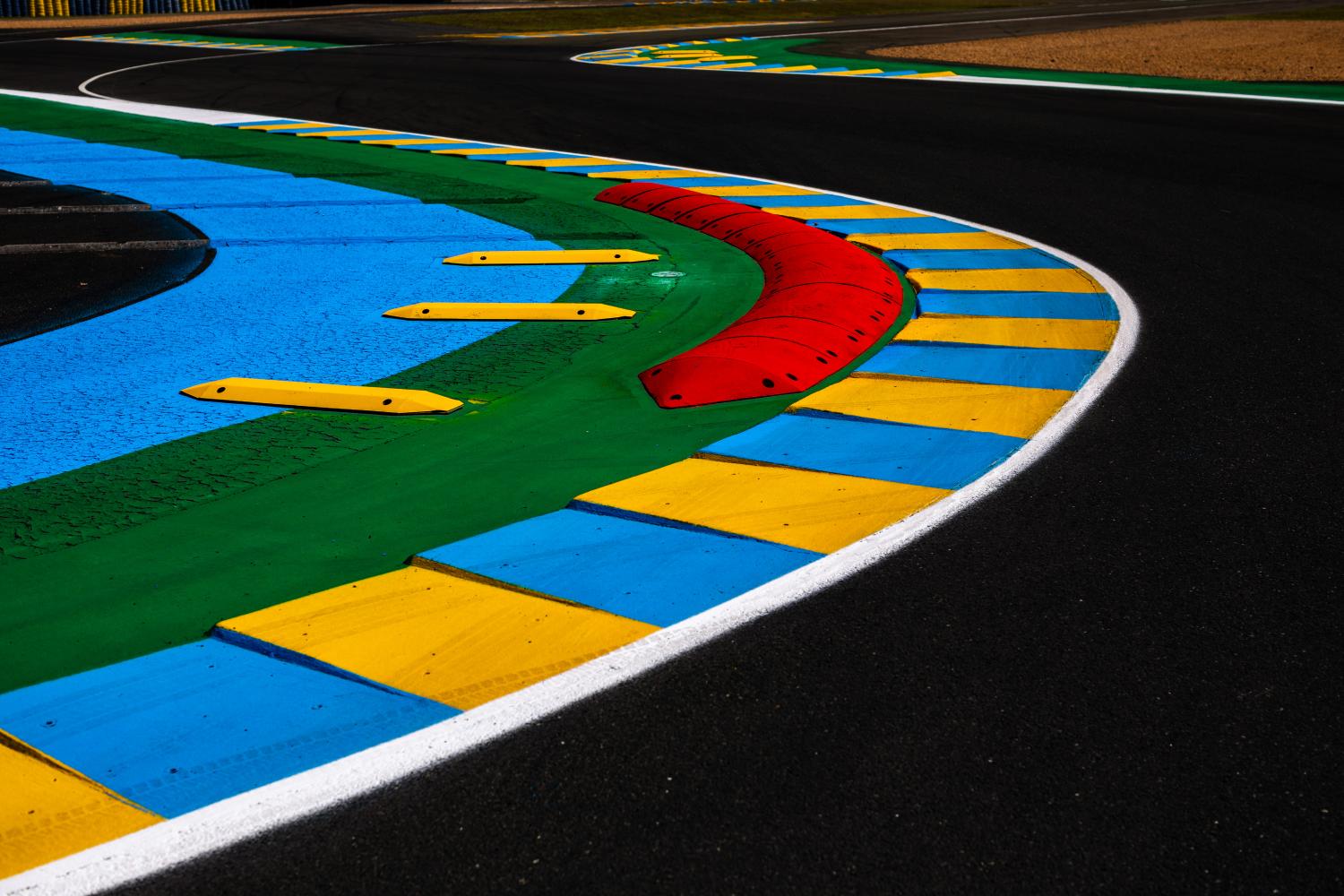What are track curbs?
At all racing circuits, curbs outside the white line serve to mark track limits and prevent drivers from excessively cutting corners, so to speak, as they constantly seek to gain time going into straights. Porsche GT Team #92 Porsche 911 RSR-19 driver Kevin Estre: "At Le Mans, there are several types of curbs. Those at the Dunlop chicane are flat, whereas the Mulsanne curbs are higher."
The use of curbs came into fashion at circuits in the late 1960s and early 1970s. It was soon understood that not all curbs were conducive to moto racing, so some have been softened in their design and size, and sometimes include removable elements.
Pro or con?
Track curbs can help drivers widen their trajectory as well as serve as a brake cue. But, too much of a good thing is just that. Duqueine Team's #30 ORECA 07-Gibson driver Tristan Gommendy: "It's better to avoid them for 24 hours because no car can take the impact they have. During the race, you have to find your pace and think about saving the car by not relying on the curbs. However, the curbs are a big part of performance and reliability, and are therefore very important, so we try to set the car up to use them."
When a driver hits a curb, he/she feels the vibrations in the steering wheel and driving seat. Kevin Estre: "We feel when the car takes air and experience the impact when it comes back down. Tristan Gommendy: "It can affect the geometry and balance of the car. The latter designs curbs drivers can take on and others they should avoid: "Most curbs at the 24 Hours of Le Mans circuit are acceptable as long as you are careful not to use them violently. On the other hand, those at the Ford chicanes, for example, are to be avoided."
Regulations
Originally, there was no reference to curbs in the regulations, but now the FIA controls the different types of curbs at any given circuit. One of the main concerns of race directors these days is respect of the race route. A certain tolerance has set in with a partial overlap of the very flat curbs which did not exist before due to the prohibitive shapes of the older generation curbs. However, if the drivers pass all four wheels to the other side of a curb, they risk a penalty for not respecting track limits.
Did you know?
Made of concrete and mostly permanent, today's curbs at the Le Mans circuit are yellow and blue in honor of the ACO's old colors, with a precise graphic charter and Pantone color references.


